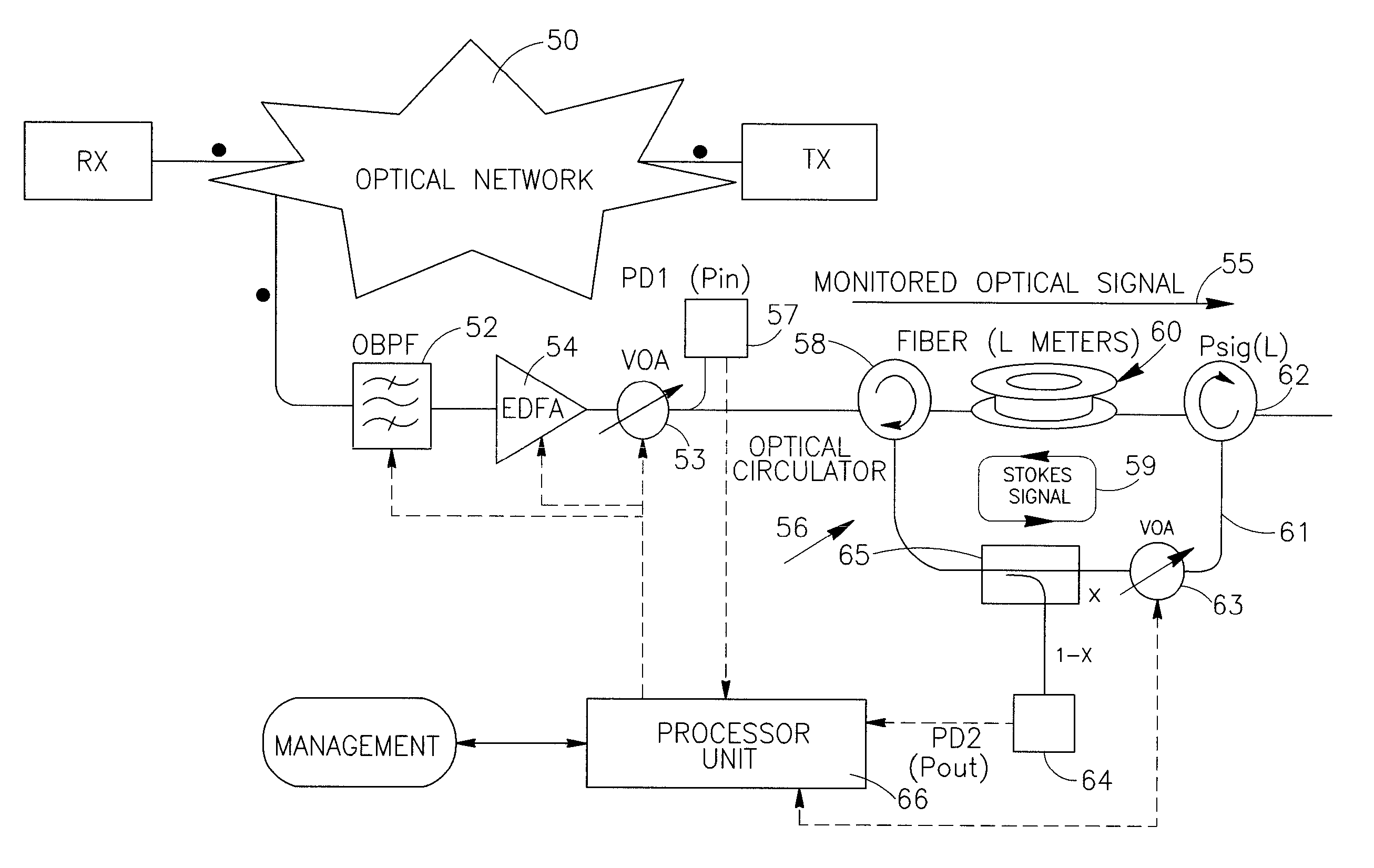In-band optical signal to noise ratio monitoring technique
- Summary
- Abstract
- Description
- Claims
- Application Information
AI Technical Summary
Benefits of technology
Problems solved by technology
Method used
Image
Examples
Embodiment Construction
[0084]FIG. 1a (prior art) schematically illustrates how the ASE noise, being always present within a real optical signal, can be presented as a noise source 22 which introduces a variable value of noise to a pure optical signal produced by an optical signal source 20. The resulting optical signal is then fed to an SBS based OSNR monitor 10. FIG. 1a illustrates the principle of the SBS-based noise monitoring. It should be noted that the character of the Stimulated Brillouin Scattering of an optical signal reacts to presence of in-band noise in the signal.
[0085]FIG. 1b (prior art) illustrates a prior art arrangement 40 for true OSNR measurement of a real optical signal, based on the SBS effect. The optical signal 42 comprising its in band noise is transmitted via an optical network link 44 and is tapped there-from to the SBS based OSNR monitor 10.
[0086]A power fraction of the optical signal 42 (say, comprising one exemplary channel to be monitored) from the link 44 exhibits a composit...
PUM
 Login to View More
Login to View More Abstract
Description
Claims
Application Information
 Login to View More
Login to View More - R&D
- Intellectual Property
- Life Sciences
- Materials
- Tech Scout
- Unparalleled Data Quality
- Higher Quality Content
- 60% Fewer Hallucinations
Browse by: Latest US Patents, China's latest patents, Technical Efficacy Thesaurus, Application Domain, Technology Topic, Popular Technical Reports.
© 2025 PatSnap. All rights reserved.Legal|Privacy policy|Modern Slavery Act Transparency Statement|Sitemap|About US| Contact US: help@patsnap.com



